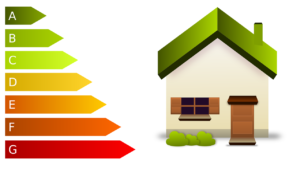05 Mar 2021
Geothermal energy, the great unknown that plays a key role in energy efficiency
Just like every 5th March since 1998, World Energy Efficiency Day is celebrated. The initiative, which was born in Austria during the First International Conference on Energy Efficiency, aims to sensitize citizens around the world about the need to reduce energy consumption through the rational and sustainable use of it.
Unlikely to what many people think, boosting energy efficiency does not mean giving up the comforts and compromising the quality of life by reducing the use of the energy we use in our daily lives. Boosting energy efficiency is based on optimizing energy production and consumption processes, promoting recycling and responsible consumption, and betting on renewable energy sources at the expense of fossil fuels, among others.

This is where geothermal energy comes into play because, of all the energies on the market, it is the most efficient. The reason? The resource needed to generate electricity and/or heat, the temperature of the subsoil, remains constant throughout the year, allowing high energy yields.
But what can we get from geothermal? In high temperature reservoirs (above 150 ºC), geothermal energy is used to produce electricity and/or heat on a large-scale. In contrast, in the residential sector it is low-temperature geothermal energy that comes into play through the heat pump, which makes it possible to produce heat and cold uninterruptedly. And everything because the weather conditions do not influence the process.
The heat pump is connected to a geothermal exchanger located in the subsoil that captures the energy that is underground at a temperature between 15 ºC and 20 ºC. By using this pump, placed inside the building, the temperature is increased to the level required by the use and, in summer, the process is reversed, injecting the heat from the cooling into the ground.
Since the temperature of the geothermal resource remains very stable, both geothermal exchange climate systems and deep geothermal plants are more efficient than those powered by fossil fuels or other renewable energies. In addition, geothermal energy ensures users with heat and electric supply in every moment, regardless of meteorological phenomena or demand.
Small gestures for efficiency

In Europe, they are working to promote the renovation of buildings and, therefore, turn them into much more efficient homes or workspaces. The European Commission has opened to public consultation the revision of the Energy Performance of Buildings Directive, whose submission deadline will end on March 22. The objective is to gather comments on to what extent and how this European directive should be revised to, at least, double the annual rate of energy renovation of buildings by 2030, as set in the Renovation Wave strategy.
In the other hand, there are many simple actions that can be done every day of the year, not only on March 5: take advantage of natural light hours for tasks that require more lighting, turn off the lights and electrical devices when they are not being used, replace old household appliances for new ones with A certification and use them rationally, prioritize public transport or ride a traditional bike, use low-consumption light bulbs in all rooms of the home, and so on. In addition to the environmental benefits, these small actions lead to economic savings.
With a small gesture you can save the planet.
